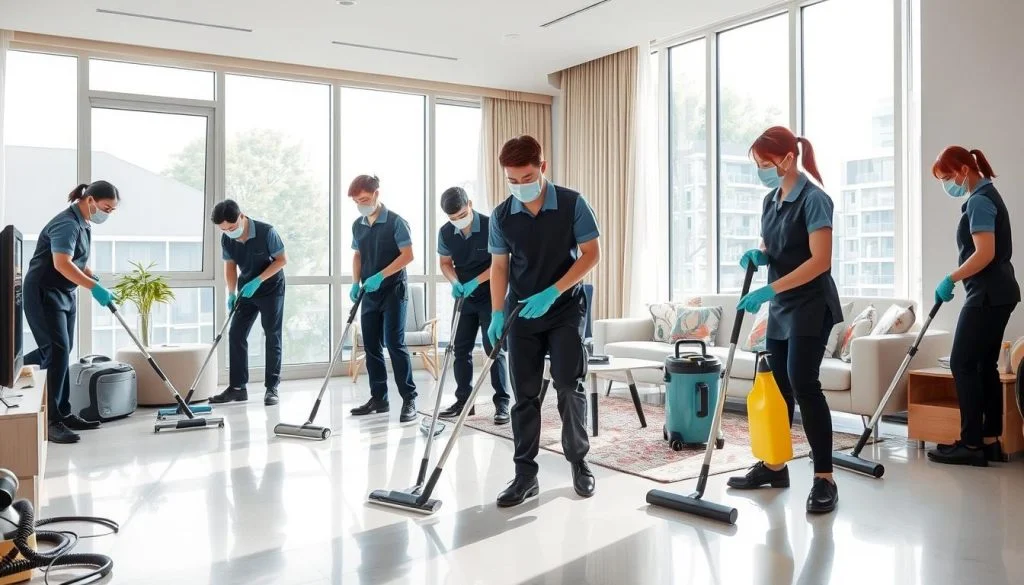It’s midnight in downtown Los Angeles. Maria, a security guard with a decade of patrolling these streets, walks past a flickering streetlight near a row of shuttered storefronts. A block away, tents cluster under a highway overpass—a makeshift neighborhood for those with nowhere else to go. Earlier that day, a boutique owner called her team after someone smashed a window and grabbed armfuls of designer jackets. Now, Maria spots a man pacing near a boarded-up café. Instead of reaching for her radio, she steps closer and asks, “You waiting for someone, or just trying to stay warm?” The man hesitates, then admits he lost his shelter voucher. Maria calls a 24/7 outreach van she knows by name. By dawn, he’s enrolled in a transitional housing program—and the café remains untouched.
This is the tightrope walked daily in cities where crime rates and homelessness collide. Skyscrapers tower over tent cities, luxury condos overlook alleys littered with needles, and the gap between safety and survival narrows by the hour. In these urban battlegrounds of Los Angles, security guard companies aren’t just enforcers of order—they’re mediators, protectors, and sometimes lifelines.
Cities in Crisis: Where Crime and Desperation Intersect
Take a walk through San Francisco’s Tenderloin district at dusk. You’ll pass tech workers clutching designer coffee cups, tourists snapping photos of street art, and families sleeping in doorways. The air hums with tension. Urban centers like this face a paradox: They’re hubs of innovation and culture, yet their sidewalks tell stories of systemic failure. Homelessness has surged by nearly a fifth nationwide since 2020, while cities report higher violent crime rates than rural areas—not from strangers in dark alleys, but from the crushing pressure of poverty, mental illness, and addiction.
The numbers only hint at the human cost. People without homes are 19 times more likely to be murdered than the general population. Small businesses, already reeling from pandemic losses, board up windows after repeated smash-and-grabs. A barista in Seattle told me, “We stopped selling pastries after 8 p.m.—too many unhoused folks would come in shaking from hunger, and we couldn’t bear to kick them out.”
Security guards occupy the messy middle ground here. Unlike police, who often arrive only after laws are broken, guards work where crises simmer beneath the surface. Their job isn’t just to deter crime but to read a room—to distinguish between a threat and a cry for help.
The Guard’s Dilemma: Handcuffs or Helping Hands?
Meet Javier, who patrols a gentrifying Brooklyn neighborhood. Last winter, he found a teenager trying to pry open a pharmacy’s back door. Instead of tackling him, Javier asked, “You after meds for someone?” Turned out, the kid’s mother needed insulin. Javier connected them to a free clinic—and the pharmacy owner later hired the teen for odd jobs.
Stories like this reveal what official reports often miss: Security teams are rewriting the script on urban safety.
De-escalation as Art Form
In cities like Portland, guards trained in crisis intervention have reduced police calls by half in some districts. They’re taught to spot signs of overdose, mental health episodes, or trafficking—skills that turn confrontations into conversations. At a Denver shelter, guards now carry naloxone kits alongside handcuffs, reversing 14 overdoses in six months.
Eyes That See Beyond Stereotypes
A guard in Chicago’s Loop district noticed a pattern: Theft spikes near a homeless encampment every third Wednesday. Turns out, a nearby food pantry ran out of supplies mid-month. By coordinating donation drops, thefts dropped by 40%. “Hunger isn’t a crime,” the guard shrugged when I asked.
Walking the Line Between Safe and Seen
For small businesses, visibility matters. When a vintage shop in Austin hired a guard named Lila, regulars joked about her floral-print uniform. But after she mediated a dispute between a shoplifter and clerk—resulting in the teen joining a job training program—the block rallied. “She’s like a neighborhood aunt who happens to know Krav Maga,” the owner laughed.
The Ripple Effect: When Security Becomes Community
Cities are taking notes. Los Angeles recently launched a pilot program pairing private security with social workers in high-risk zones. Guards secure perimeters while outreach teams connect people to housing—a model that’s already diverted 200+ individuals from streets to shelters. In Miami, guards on electric bikes patrol tent cities, not to disband them but to prevent assaults and fires.
The impact? Tangible and unexpected. A Seattle coffee shop saw customer traffic jump 30% after hiring guards. “People felt safe lingering again,” the manager said. In Philadelphia, a guard’s nightly patrols near a school-turned-shelter led to a community garden where residents grow vegetables.
The Human Cost of Doing Nothing
But the work takes its toll. Guards in cities like San Diego report burnout from daily encounters with overdoses and violence. “I’ve had to revive the same man three times this month,” one told me, voice cracking. Others face public scorn—labeled as “gentrifiers with badges” or “wannabe cops.”
The solution isn’t just better pay (though $18/hour seems criminal in cities where studios rent for $2,500). It’s redefining security as a social service. Oakland’s “Guardian Academy” now offers therapy sessions and trauma training alongside defensive tactics. “We’re not robots,” an instructor emphasized. “You can’t process finding a dead body at 3 a.m. and clock out like nothing happened.”
A Blueprint for Cities That Care
To truly transform urban safety, we need:
Guard-Led Crisis Teams: Pair every private security firm with social workers, like Denver’s STAR program.
Transparency Pacts: Require guards to document interactions, creating data to improve outreach.
Community Councils: Let residents and guards co-design neighborhood safety plans over potlucks, not Zoom.
The Bottom Line: Safety Is a Verb
Maria still walks her LA beat, flashlight in hand. But these days, she also carries granola bars stamped with shelter hotlines. “Most folks just want to be seen,” she told me. Last month, a woman she’d helped into rehab stopped by her post with homemade tamales.
That’s the heart of urban security—not drones scanning rooftops or apps that “predict” crime, but humans who look each other in the eye and ask, “How can we get through this together?”
Cities don’t need more surveillance. They need more Marias.









